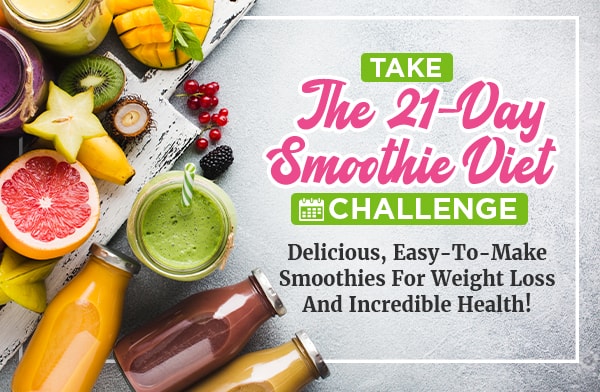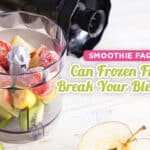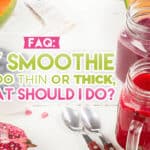Nutribullet vs Magic Bullet: What’s The Difference?
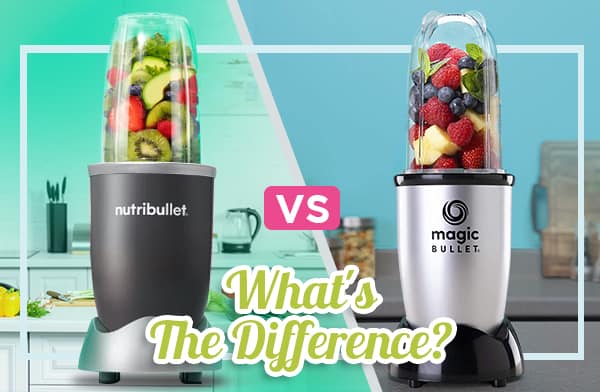
In the wide world of blenders, there are all kinds of options available to you. Some people love their huge, commercial-grade Blendtec or Vitamix blenders. Others prefer something a little smaller, or even a lot smaller.
That’s where the two we’re talking about today come in. The Nutribullet and the Magic Bullet are both small-scale blenders designed to help you limit your portions and blend up a single cup’s worth of whatever it is you’re making.
They’re excellent for small-scale usage, like a quick smoothie for breakfast that you can take on the go. They also take up much less room and can easily be stored away in a cupboard compared to the larger blender models.
There’s a reason the Nutribullet is one of my recommended blenders, after all.
If you’re looking for a small-portion blender, you’re likely going to be comparing the Nutribullet and the Magic Bullet. What are the differences, and which one should you buy? Read on to find out.
Branding
First up, let’s talk briefly about the branding of the two. The Magic Bullet and the Nutribullet are both blenders offered by the same company, which is Homeland Housewares, a subsidiary of Alchemy Worldwide.
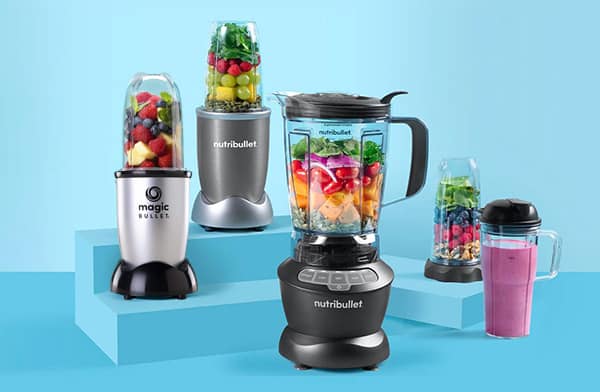
Though they’re made by the same company, the two have different target audiences. The Magic Bullet is typically an “as seen on TV” product, sold on endcaps in supermarkets and via infomercials in the early morning hours. The Nutribullet, meanwhile, is aimed at more health-conscious individuals, bloggers, and people looking for a little more upscale or “classy” personal blenders.
That said, since they’re owned by the same company and can be bought on the same website, and they both get plenty of online coverage, there’s not really a huge difference in their modern branding. In the past, they were more distinct, but those differences have faded.
Power
One of the most important parts of a blender, especially one you’re regularly using to make smoothies, is the power of the motor. You want a blender with enough wattage and power in the motor to crush ice or mince frozen fruit into a creamy, delicious drink.
In my blender guide above, I mention that ideally, you want a blender that has at least 500 watts of power behind it. Anything less, and you risk not being able to appropriately crush ice or handle a larger smoothie.
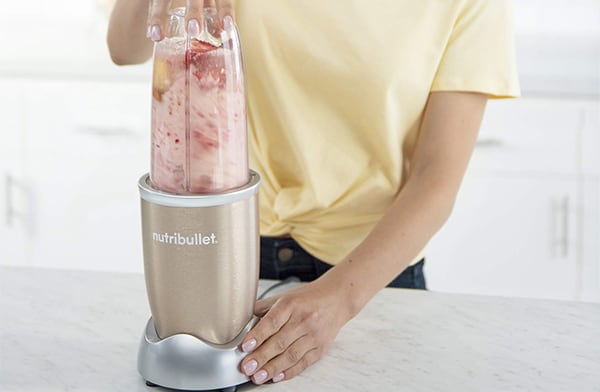
Unfortunately for the Magic Bullet, it loses this competition. All three models of Magic Bullet, according to their website, have either 200 or 250 watts of power. Meanwhile, the Nutribullet blenders are more than double. The regular Nutribullet is 600, the Pro 1000 is, well, 1,000, and the Rx (my favorite) is a whopping 1,700.
Basically, the Magic Bullet is meant to be a small, personal blender that chops up fresh fruit and mixes a few ingredients together. It’s not really meant to be as powerful or to chop through hard ice or tough frozen fruits the way the more powerful blenders are.
Blades
Blades are the most important part of a blender. You don’t want excessively sharp blades, nor do you want blades that can break or chip. Both the Magic Bullet and Nutribullet have steel blades, but they have different designs.
The Magic Bullet blade is a traditional cross blade, shared by most blender designs. If you look at it side-on, it looks kind of like a flattened X. Some versions of the machine also have nearly flat blades as well. These are fine, if not the best possible blade design.
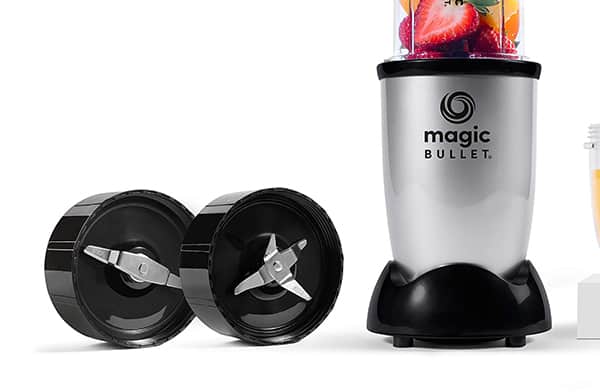
The Nutribullet, meanwhile, rose to fame on the claims of its unique blade being able to “better extract nutrients” from the food you blend up. Now, this isn’t really true – your digestive system will extract whatever nutrients you can from your food regardless of how well-blended it is ahead of time – but it does mean that the blade design is different.
Nutribullet blades are actually three-layered. One set points down, one set points up, and one set is horizontal. This adds more chopping action to the blender and can more thoroughly blend up your smoothie ingredients. The downward-pointed blades also bend slightly to help prevent ingredients from getting caught below the blades.
Size and Capacity
Another meaningful factor for a blender is the size and capacity of the blender itself.
The Nutribullet is a larger blender than the Magic Bullet, and the varying models are also larger. Magic Bullets are around 2.5 pounds and can hold up to about 18 oz. of smoothie in each cup. Meanwhile, the Nutribullet is closer to 4 pounds and can hold 24 oz. of ingredients.
I’m going to be honest here; for most of you, the minor difference in weight or capacity won’t be terribly meaningful. If you’re using dedicated Nutribullet recipes, they’ll be small enough to fit in either blender, and a few ounces of difference isn’t going to make or break your diet. The weight, meanwhile, isn’t all that much different and won’t be important to most of you reading this.
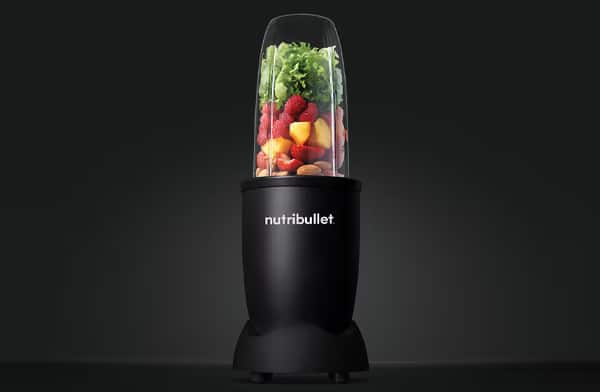
The more powerful Nutribullet versions also have larger capacities and are heavier. If weight is a concern, the Rx might not be small enough for you, though I still think it’s much better than larger “full size” blenders.
One thing worth noting is that blenders typically need something to hold them in place while they work. With larger blenders, the weight of the machine is enough to do it. For smaller bullet blenders, like the Magic Bullet and Nutribullet, they have suction cups on their bases to help hold them in place. I personally find this a little inconvenient sometimes, but it also helps make weight less of a concern.
Construction
There aren’t a whole lot of differences between the two blenders in terms of construction. They all use more or less the same kind of parts and design elements. The Nutribullet is a little more refined and iterated in design – it’s the newer model, after all – but they’re largely similar as bullet-style blenders.
In my blender guide, I mention that having metal parts like the gears and drive shaft are important for the longevity of your blender. Unfortunately, the Nutribullet has a plastic driver, so it’s a little more fragile than other kinds of blenders. I haven’t taken apart a Magic Bullet to see what their internals are like, though, so they may be the same.
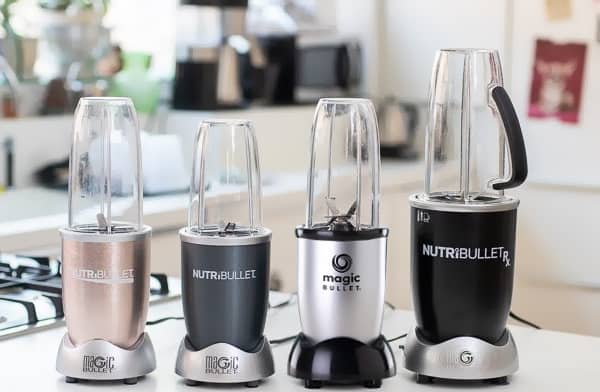
Likewise, both styles of bullet blender have a cup with threads on top, and a lid that holds the blades. You fill your ingredients, screw on the blade lid, and flip it over to attach to the motor and blend. Then, you flip it back, remove the blade lid and put on a storage lid (or just sip from the cup like a glass), and wash the blade lid quickly and easily.
This has some advantages compared to traditional blenders, particularly in terms of cleaning. Unfortunately, if the threads wear down or if the lid isn’t screwed on tight enough, the blenders can leak. This is, again, a quirk shared by all blenders of this style, so it’s not a drawback to either the Nutribullet or the Magic Bullet.
Warranty
Since the parts wearing down is a concern, you’ll be concerned about the warranty for your blender. This is especially true when you’re making smoothies on a daily basis, which puts a lot of use on your blender’s parts.
Unfortunately, both machines – being made by the same company – have the same warranty. It’s also a pretty limited one-year warranty, so while you can replace your blender if it breaks relatively quickly, it probably won’t.
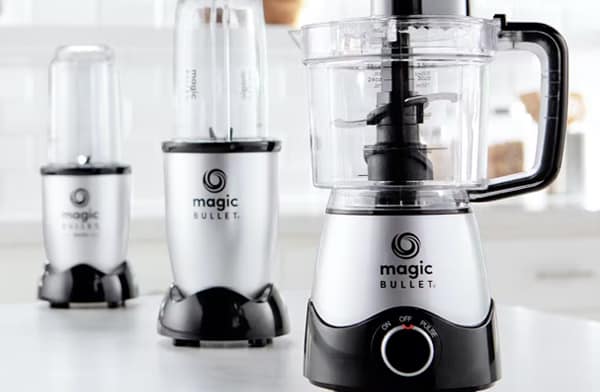
Compare this to something like Blendtec, which offers an eight-year warranty, or Vitamix and their shocking 10-year warranty, and you can see how this will fall short. Of course, those other brands are also much more expensive to buy in the first place. Speaking of…
Price
The Magic Bullet is very much meant to be an introductory bullet blender, something you buy cheap as an impulse over a late-night infomercial and use for a while before tossing it. The Nutribullet is a little less, uh, disposable, but it’s still fairly cheap.
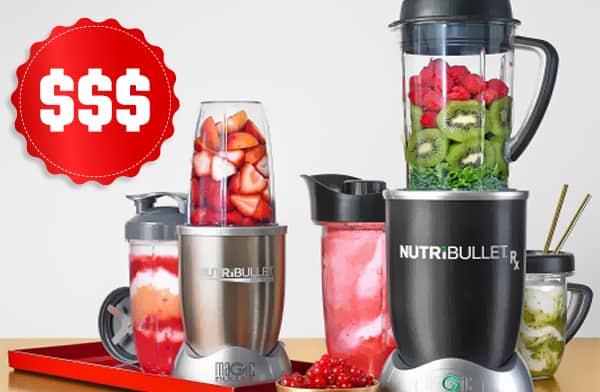
That said, there are several models of each:
- Magic Bullet Mini – $30
- Nutribullet Go – $35
- Magic Bullet Original – $50
- Magic Bullet Kitchen Express – $80
- Nutribullet – $80
- Nutribullet Pro 900 – $110
- Nutribullet Pro 1000 – $120
- Nutribullet Select – $120
- Nutribullet Rx – $180
There are also a few more traditionally-shaped blenders like the Nutribullet Smart Touch, but since it’s not actually a bullet blender, I’m not concerned with them for this article.
I will say, you get what you pay for at this price range. The Magic Bullet Mini is very small and limited, and also not very strong. The Rx, my favorite, is a beefy machine that will handle pretty much any smoothie you throw at it. That said, there’s something for any price range here.
Accessories and More
There are a few things that can make different models of blender stand out. Several of the Magic Bullet and Nutribullet blenders have packages of accessories, including extra cups, lids, and rings. Some of them even have tools to help you tighten on the lids. Unfortunately, none of them have tampers, though that’s largely a quirk of design; there’s nowhere for them to fit.
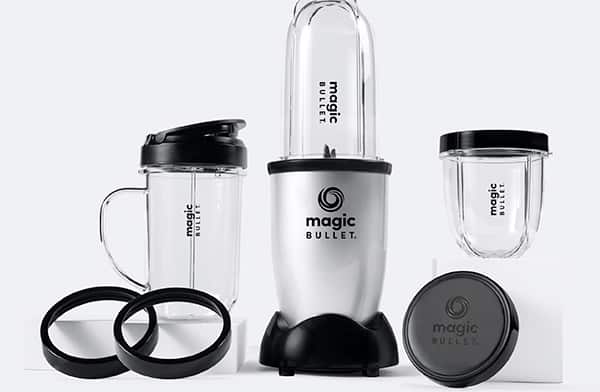
Almost all of the Nutribullet and Magic Bullet blenders only come in a single color, usually either silver or black. The Nutribullet Pro comes in over a dozen different color options, though. If that’s meaningful to you, that’s your option. Even the Rx only comes in black.
All of the cups offered by the Nutribullet company are BPA-free plastic. No glass or metal carafes here, which is fine. These are meant to be small, agile, lightweight machines, not durable and enduring devices.
Noise
Noise is occasionally a problem for larger industrial-scale blenders or blenders that crush ice. It can be an issue if you want breakfast smoothies but don’t want to disturb your family.
Fortunately – or unfortunately, depending on your perspective – the Magic Bullet is one of the quietest blenders I’ve ever heard. It’s obvious why – the underpowered motor is barely enough to blend foods, let alone crush through anything hard enough to make noise.
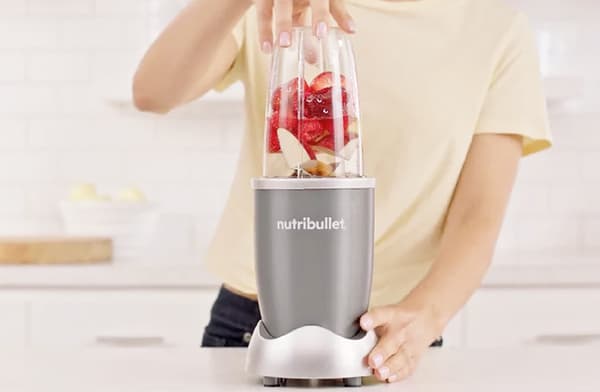
The Nutribullet, meanwhile, is more on par with other blenders, though still a little quieter than others.
Really, though, a lot of the noise from a blender comes from the ingredients you put in it. Even the quietest blender is going to make a lot of noise if you fill it with ice or nuts, and a loud blender is going to seem quieter if it’s just blending up fruit and yogurt. It’s hard to directly compare with real usage habits.
Which Blender Wins the Battle?
As you might expect, if you read my blender guide, I’m going to pick the Nutribullet here. Specifically, I recommend the Nutribullet Rx, which is their most powerful bullet-style blender. They also offer more traditional stand blenders, but if you want one of those, just go with a Vitamix.
The Magic Bullet is simply too underpowered to be worth using for smoothies. It would be one thing if you were only using it for things like fresh fruits or baby food, but the moment you put something like nuts or ice into the Magic Bullet, it’s going to fall over. If you’ve never seen a blender jam on a bit of frozen berry, I hope you never do.
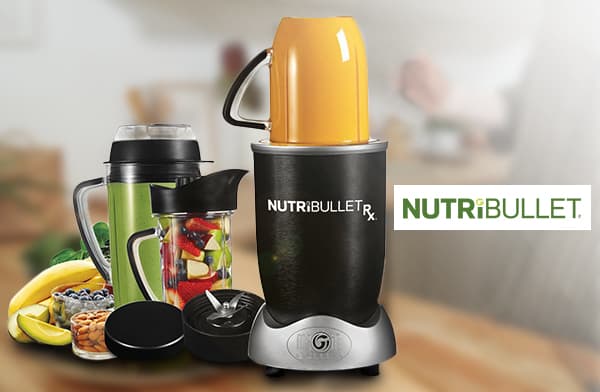
Even the weakest of the Nutribullet blenders, meanwhile, are more than powerful enough to handle ice and blend up just about any smoothie recipe you could want. There’s no reason to go for a much weaker, less useful device just to save $20 or $40, in my mind.
If you’re looking for ideas of what to put in your fancy new Nutribullet – which I’m sure you’ve now ordered based on my recommendations – please check out the Smoothie Diet. It’s a carefully-designed diet plan based around replacing your breakfast and lunch with smoothies, and I offer a wealth of recipes for you to try. There’s something there for everyone, I promise.
